Joseph L. Owades, the son of working-class Jewish immigrants who escaped Europe shortly before ethnic turmoil ignited World War I, enjoyed an unlikely career reinventing the way Americans drink beer.
Not once, but twice.
His claim to fame? That he was, and still is, America’s greatest brewer.
FOX NATION’S NEW SERIES ‘MEET THE AMERICAN WHO’ TELLS OF ORDINARY AMERICANS WHO GAVE US EXTRAORDINARY INNOVATIONS
Here is the story of the American who invented light beer — and helped create craft brewing as we know it today.
America’s ‘brewfather’
The brilliant biochemist Owades (1919-2005) turned centuries of brewing know-how upside down in the 1960s when he developed a revolutionary process for brewing full-flavored beer with fewer carbohydrates and calories.
Light beer is what we now call his creation.
“Tastes great. Less filling” — that’s how the cultural-landmark Miller Lite marketing campaign of the 1970s and ’80s famously summed up his innovation.
Today, light beer accounts for about 40% of all beer consumed across the nation, according to Beer Marketer’s Insights.

Joseph Owades invented light beer in the 1960s, revolutionizing the American beer industry, then in the 1980s became an essential figure behind the craft beer phenomenon. (Courtesy Owades Family)
“He lived long enough to see light beer become a national phenomenon,” his son Stephen Owades, an MIT-educated musician in Cambridge, Mass., told Fox News Digital in a phone interview.
For an encore in the 1980s, Owades provided his brewing expertise to a generation of young entrepreneurs eager to make small-batch American beer but lacking the expertise.
America now boasts more than 9,000 craft breweries, thanks largely to the success of Owades-aided pioneers.
Anchor Brewing, Samuel Adams, the former Pete’s Wicked brand — each on the list of the earliest, most successful and most influential craft breweries — were among the companies that hired Owades to pair his technical precision with their passion.
CLICK HERE TO SUBSCRIBE TO FOX NATION
America now boasts more than 9,000 craft breweries, thanks largely to the success of these Owades-aided pioneers.
“He was present at the creation” of craft brewing, Boston Beer Company (Samuel Adams) founder Jim Koch boasted to Fox News Digital in an interview.
Koch called Owades “a mentor.”
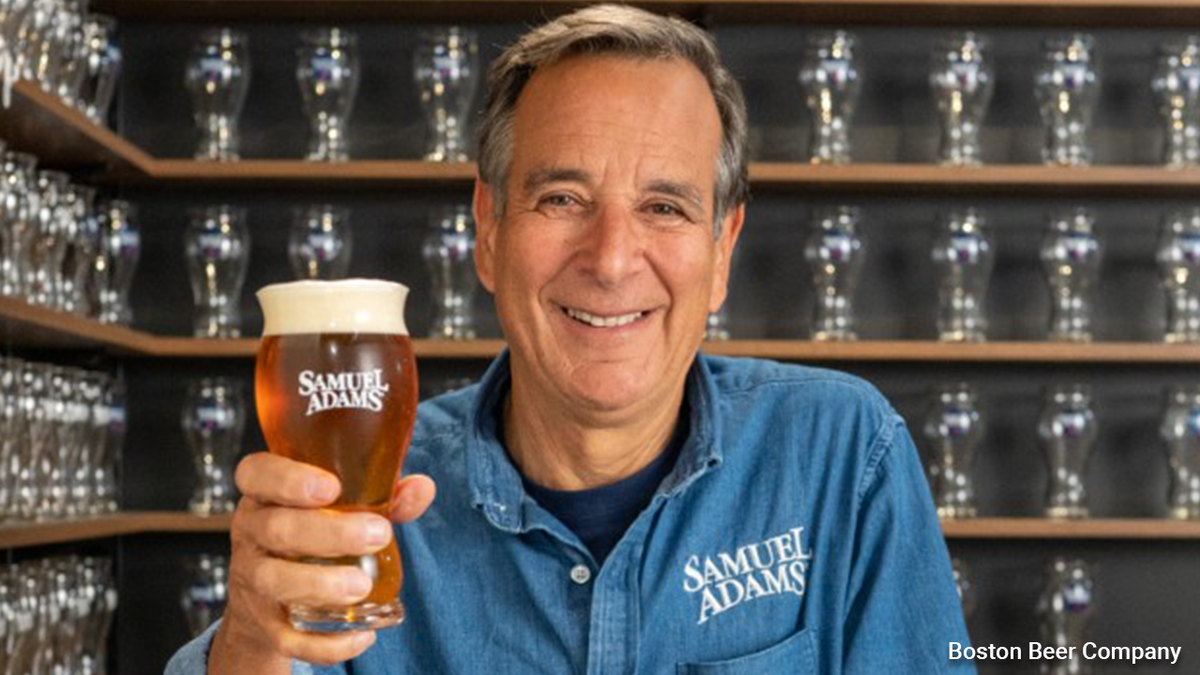
Jim Koch of Boston Beer Co. told Fox News Digital that Owades “was our brewfather. The first. The only. The best.” (Boston Beer Company)
When Owades passed away in 2005, Koch flew across the country to speak at the funeral in Sonoma, Calif. — and named one of Boston Beer Co.’s large aging cellars in honor of the American brewing titan.
“He was our brewfather. The first. The only. The best,” said Koch.
MEET THE AMERICAN WHO INVENTED BUFFALO WINGS, DISRUPTED ENTIRE CHICKEN INDUSTRY
The late beer-making genius is a legend in the brewing industry, though largely unknown to the millions of consumers who each day enjoy the beer and beer styles he helped formulate.
Son of an immigrant cloth cutter
Simon and Gussie (Horn) Owades, Joseph’s parents, met and married in New York City, according to Stephen Owades. Simon arrived at Ellis Island in 1905, Gussie around the same period.
They held passports from the former Austro-Hungarian Empire, though the area in which they lived is now part of Ukraine. They were not Ukrainian, however, said their grandson Stephen.
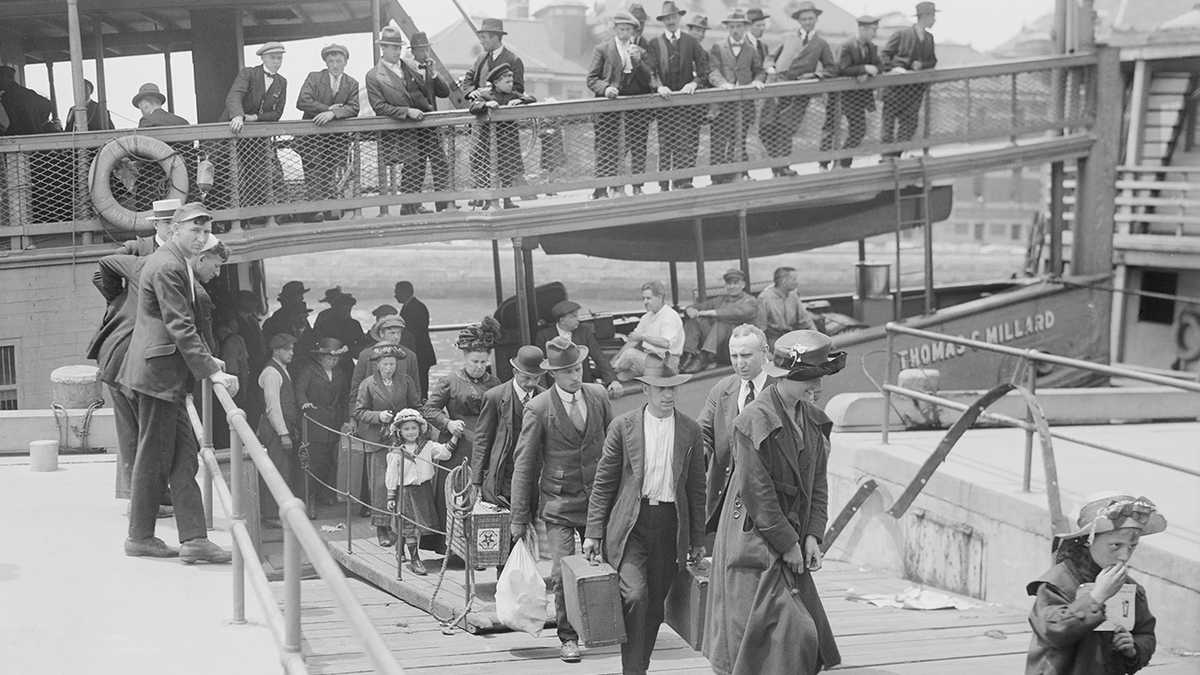
Joseph Owades’ parents, Simon and Gussie Owades, arrived at Ellis Island from Eastern Europe like millions of other immigrants who came to America for a better life. Above, immigrants are shown arriving in New York City, Bain News Service, 1920. (Universal History Archive/Universal Images Group via Getty Images)
“They were Jews from The Pale” — a multinational area of Eastern Europe before World War I generally tolerant of Jews, but largely impoverished.
Many of them fled for the United States to escape persecution and poverty and seek better opportunities for their children.
Joseph Owades fulfilled those dreams of his immigrant, Yiddish-speaking parents.
“I call him the hired gun of the craft beer industry.”
Simon Owades fed the family by working as a cloth cutter in New York City’s robust but labor-intensive garment industry. His working-class immigrant heritage helped fuel his son’s career as a scientist.
“He was a hands-on, industrial guy,” Pete’s Wicked Ale founder Pete Slosberg told Fox News Digital this week.
“I call him the hired gun of the craft beer industry.”
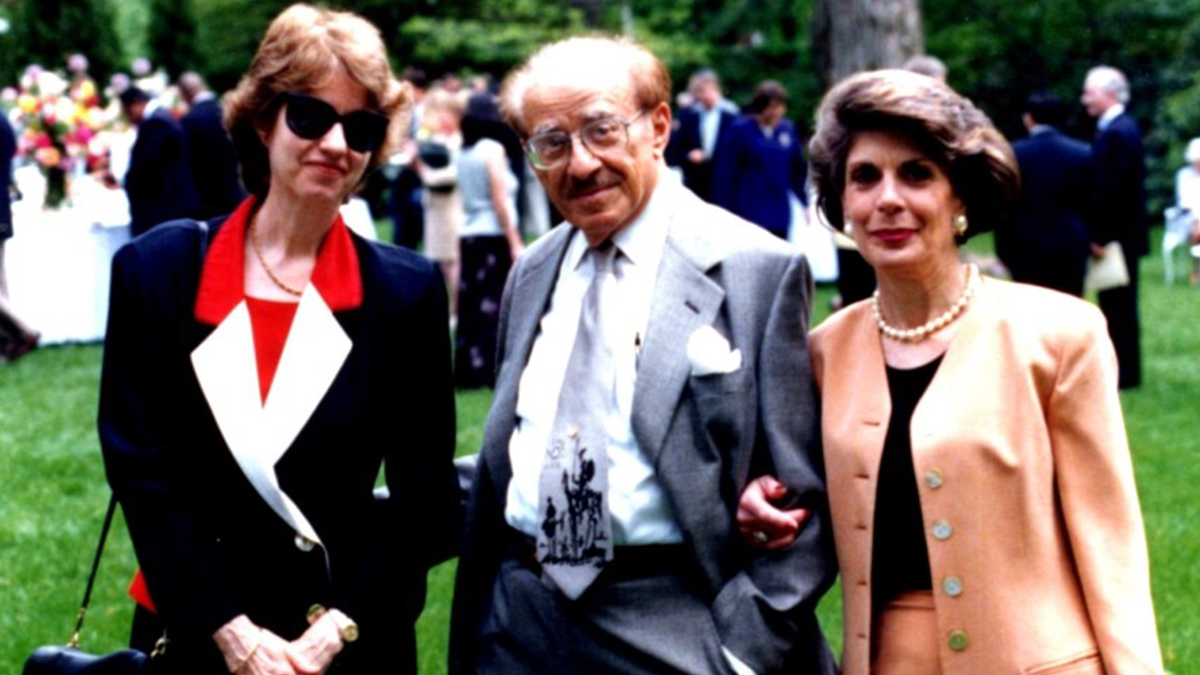
Joseph Owades and his wife Ruth (at right), with a family friend. (Courtesy Owades family)
Being poor and Jewish in pre-World War II America meant there were few available seats in the Ivy League or other elite institutions of higher learning.
The brilliant young Owades might have gone to Harvard or Yale — but “educational opportunities for Jews faced quotas at this point,” said Koch.
ALCOHOL-FREE BEER IS BOOMING: 5 BRANDS AND 3 REASONS BEHIND THE NO-BUZZ BUZZ
Staring at limited prospects in the 1930s, Owades, who attended New York City public schools, moved on to higher education at City College of New York, Gotham’s low-cost public university.
It was at Rheingold that Owades had his eureka moment.
He later earned his PhD from the former Brooklyn Polytechnic Institute and embarked on a career in food science. Among other achievements, he became an expert in yeast, essential to beer-making, for Fleischmann’s Yeast.
He then become an executive at Rheingold Brewery in Brooklyn, which dominated the New York City beer market for much of the 20th century.
Light beer bombs on Broadway
At Rheingold, Owades had his eureka moment.
He discovered that brewing beer with an enzyme called amyloglucosidase “breaks down the sugars that the natural enzymes [in the brewing process] cannot,” Koch explained.
Yeast eats sugar during fermentation, converting it into alcohol. The enzyme Owades used gobbled up more of the sugars — meaning fewer calories but more alcohol.
More alcohol proved no problem. The beer could be reduced down to typical beer-strength of around 4%-5% alcohol by adding carbonated water, said Koch.
So Owades not only invented a new reduced-calorie beer — he instantly saved money and boosted productivity.
MEET THE AMERICAN WHO INVENTED SLICED BREAD: OTTO ROHWEDDER, HARD-LUCK HAWKEYE
“Instead of spending $600 million on a new brewery, you could spend $100 million on high-speed bottling lines and double the capacity of a brewery,” said Koch.
Rheingold executives failed to capitalize on the innovation. They promoted the beer tepidly as a low-calorie alternative to traditional beer — “It doesn’t taste like it doesn’t fill you up” read one poorly worded ad.
“So what’s it taste like?” posited another awkward promo.
And they meekly offered this product from a safe distance.
Rheingold created a shadow company called Forrest Street Brewing and marketed the new brew as Gablinger’s Beer to avoid sullying the flagship brand name.
“They were afraid of the blowback,” said Stephen Owades. He recalls as a teenager watching dad’s Gablinger’s Beer, under the code name Jupiter, being blind taste-tested against Rheingold’s flagship lager at the 1964 New York World’s Fair in Queens.
For more Lifestyle articles, visit www.foxnews.com/lifestyle
“The consensus was that Gablinger’s scored higher than Rheingold. Significantly higher,” said the younger Owades.
New Yorkers apparently loved the taste of the low-calorie beer. But “Rheingold couldn’t sell it,” said the son.
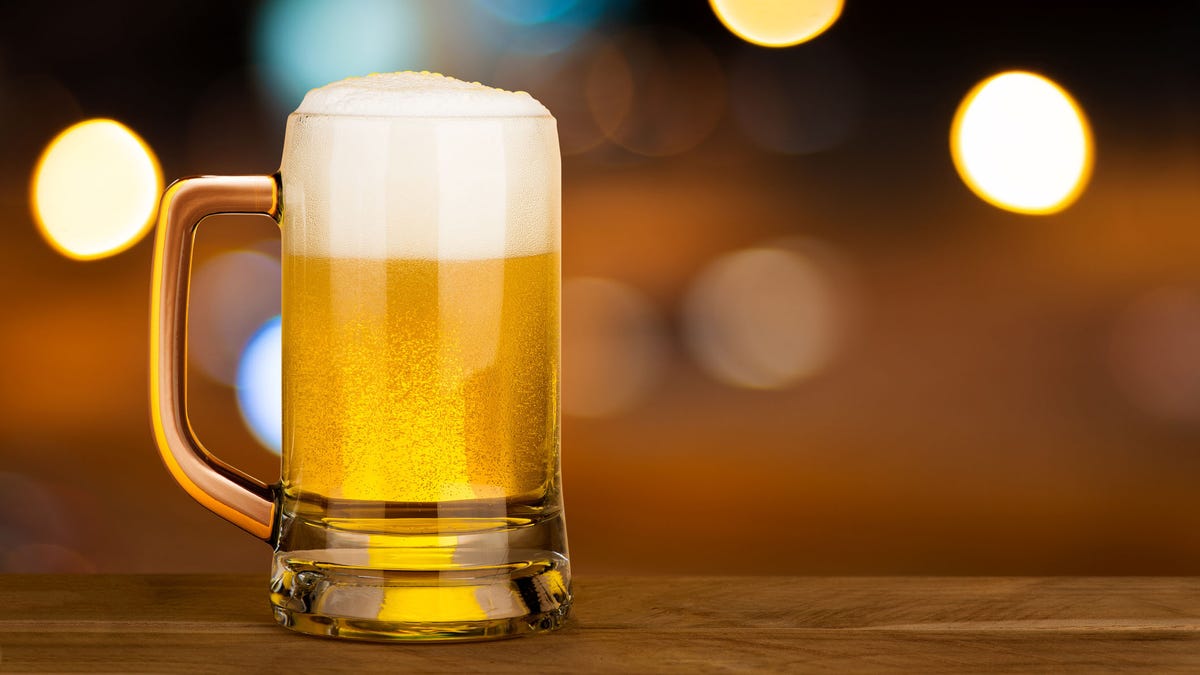
In addition to creating light beer, Joseph Owades also provided his brewing expertise to a generation of young entrepreneurs eager to make batches of American beer but lacking the expertise. (iStock)
The beer never quite captured the assertive image traditionally associated with and coveted by largely male beer drinkers.
‘Tastes great. Less filling’
Owades, facing no objection from Rheingold following the failure of Gablinger’s, brought the light beer concept to Peter Hand Brewing of Chicago.
There, it was marketed as Meister Brau Lite, a low-calorie version of their flagship brand Meister Brau.
The new owners rebranded the product Miller Lite and threw the full weight of their marketing muscle behind Owades’ innovation.
It slowly built a cult following among working-class enclaves of the still heavily industrialized Midwest — as Miller Brewing executives allegedly learned in the course of their due diligence while purchasing Meister Brau Lite in 1972.
“Meister Brau Lite wasn’t doing well,” said Koch. “Except there was an anomaly. It was doing well in the blue-collar bars on the South Side of Chicago — White Sox territory.”
Similar versions of the story cite other working-class communities in the region.
The Miller execs asked men at the bar why they liked Meister Brau Lite.
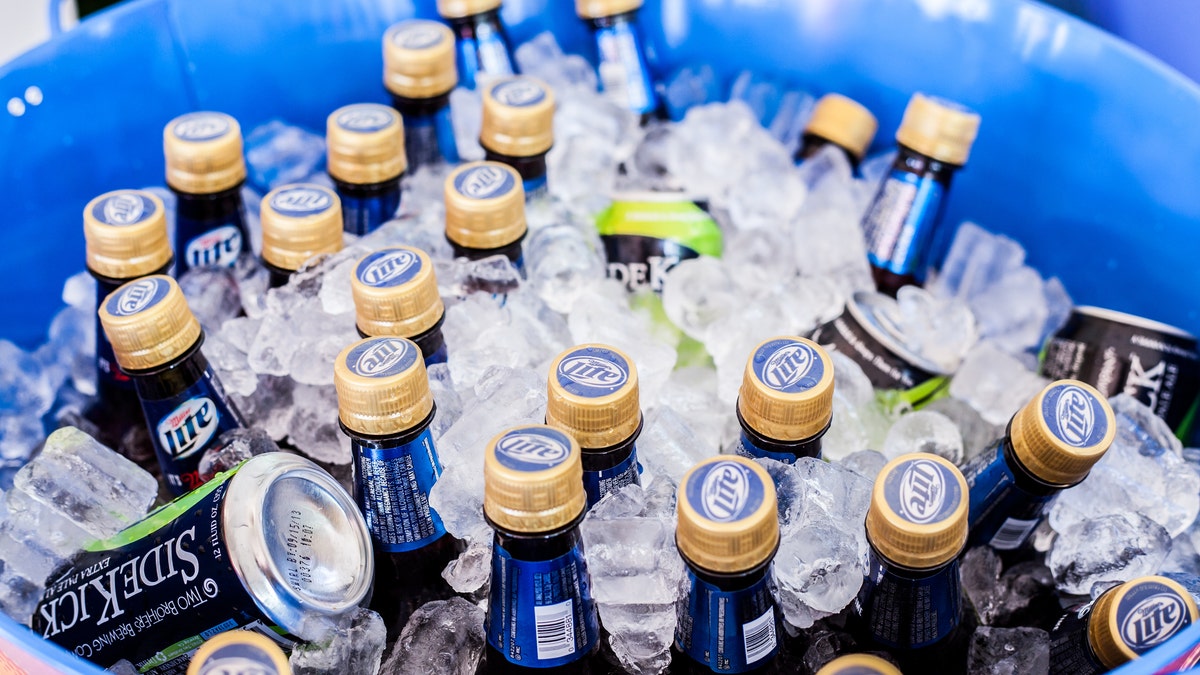
A selection of Miller Lite and SideKick Extra Pale Ale offerings are shown on ice for a party in Chicago in June 2013. (iStock)
“Because it tastes great and has less filling, they said,” according to Koch. “The light bulb went off from there.”
The new owners rebranded the product Miller Lite and threw the full weight of their marketing muscle behind Owades’ innovation, most notably with an ad campaign featuring a who’s who of macho male celebrities and athletes of the era.
Athletes, celebrities and fans argued in a series of ads over Miller Lite’s greatest quality.
Former NFL star Bubba Smith starred in one early ad, touting his brawn on the football field before effortlessly ripping the top off a can of Miller Lite with his massive, meaty paw.
CLICK HERE TO SIGN UP FOR OUR LIFESTYLE NEWSLETTER
Legendary Chicago Bears tough guy Dick Butkus starred alongside Smith in another spot, growling, “We’re not just a couple animals who can only play football.”
The campaign developed the pithy tagline “Tastes great. Less filling” — as athletes, celebrities and fans argued in a series of ads over Miller Lite’s greatest quality.
In the 1980s, sports fans in packed arenas across the country began parroting the debate by the tens of thousands. One half of the ballpark yelled “Tastes great!” — while the other half barked back, “Less filling!”
It was marketing gold. Miller Lite had gone viral.
Light beer remains a largely American phenomenon, say industry experts.
Owades’ innovation had finally met its moment.
America embraced the more muscular image of his reduced-calorie beer and never looked back.
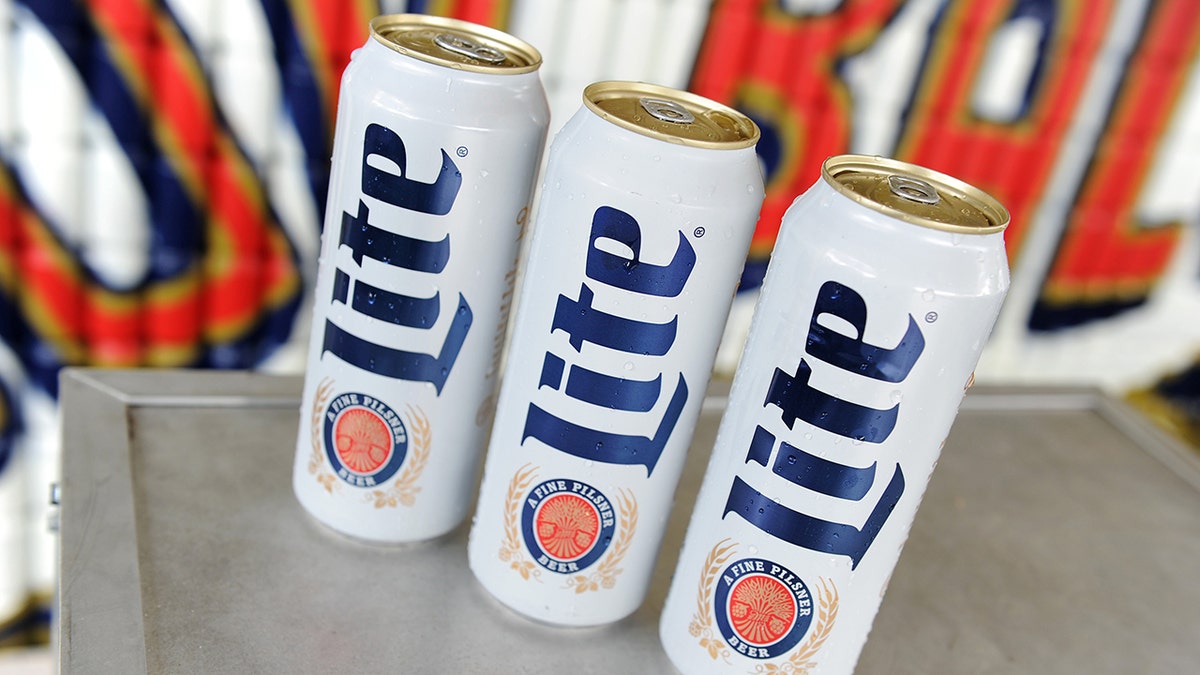
Cans of Miller Lite are shown on display at the Miller Lite Beer Hall, created by MAC Presents, at the Governors Ball on June 3, 2016, in New York City. (Photo by Craig Barritt/Getty Images for MAC Presents)
The other big breweries quickly joined the light beer movement.
Today, the top-three selling beer brands in the U.S. are Bud Light, Miller Lite and Coors Light. Light beer remains a largely American phenomenon, say industry experts.
Owades, ironically, was not a beer drinker.
“He didn’t love alcoholic beverages as a concept,” said his son. “To him, it was an interesting science problem to solve. He had an expert palate and nose. But he was not somebody who loved beer.”
Yet generations of Americans have loved — and still love — the beer he created.
To read more stories in this unique “Meet the American Who…” series from Fox News Digital, click here.
https://www.foxnews.com/lifestyle/meet-american-who-invented-light-beer


